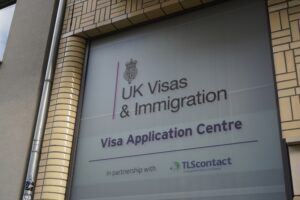Applying for a UK spouse visa can be one of the most important steps a couple takes together. But it can also be one of the most frustrating, especially when an application is refused.
Each year, thousands of applicants are denied, often for avoidable reasons. While the process can feel bureaucratic, most refusals come down to missing documents, unclear evidence, or misunderstanding the rules.
This article explores the most frequent reasons spouse visa applications are rejected and what you can do to steer clear of them.
Insufficient Evidence of a Genuine Relationship
One of the most common reasons for refusal is failing to show that the relationship is real and ongoing. A marriage certificate or civil partnership registration is required, but on its own, it’s not enough. The Home Office wants to see that the relationship is active, stable, and based on a genuine connection.
Applicants who submit only a few photos or generic messages often fall short. Without clear records of shared life, communication, or time spent together, the case can appear superficial. Immigration officials are trained to spot relationships that seem fabricated or based purely on convenience. To avoid this, provide consistent, detailed, and varied evidence that tells the story of your relationship over time.
Incomplete or Inconsistent Documentation
Even if your relationship is strong, your application can be undermined by careless errors. One of the fastest ways to a refusal is submitting a form with missing sections, mismatched dates, or conflicting information. The Home Office compares the application form, supporting documents, and personal statements. If there are contradictions, they may question the integrity of the entire submission.
For example, if your stated date of cohabitation differs between your written statement and tenancy documents, it can raise red flags. Ensure that every document you submit is current, accurate, and consistent across your entire file. Pay attention to small details such as names, addresses, and timelines, they matter more than you think.
Failing to Satisfy the Financial Requirement
Since April 2024, the minimum income threshold for a UK spouse visa is £29,000 per year. This requirement must be met by the sponsoring partner through employment, self-employment, or savings. Many applications are refused because the financial income requirement is not met, either because documents are incomplete, formatted incorrectly, or don’t show the required income.
It is not enough to say you meet the requirement; you must prove it. If you are relying on employment income, you need to provide payslips and corresponding bank statements for six months. If you are using savings, the amount must be held for at least six months and meet the required calculation. If the evidence does not match exactly what the Home Office expects, your application can be denied even if the income exists.
Submitting Invalid or Expired English Language Evidence
Language ability is another mandatory requirement. The sponsoring partner does not need to meet this, but the applicant must demonstrate a basic command of English. Most people do this by taking an approved English language test at CEFR Level A1 or above.
A common mistake is taking the wrong test or taking it at a centre that is not approved by UK Visas and Immigration (UKVI). Others submit certificates that have expired. If your test is not on the approved list or has lapsed by the time you apply, it will not be accepted. Alternatives, such as holding a degree taught in English or being a citizen of a majority English-speaking country, can also satisfy the requirement, but documentation must be provided in the correct format.
Weak or Generic Personal Statements
The Home Office wants to see your story in your own words. A strong personal statement can humanise your application and help tie together your documents. However, many applicants submit statements that are vague, overly formal, or copied from templates found online. These do little to convince an immigration officer that the relationship is meaningful and unique.
An effective personal statement should briefly describe how you met, how the relationship developed, your time together, and your future plans. It should match the tone and content of your supporting evidence and feel authentic. Avoid generalities and focus on personal, specific experiences that reflect the depth of your relationship.
Poorly Organised Evidence
You may have strong evidence, but if it’s presented in a disorganised or confusing way, it can still hurt your application. Immigration officers handle large volumes of applications and don’t have time to decipher poorly structured files. If they can’t follow the narrative or match your evidence to your claims, they may decide in favour of refusal.
This often happens when applicants submit large bundles of unlabeled screenshots, mixed-up documents, or items out of chronological order. A better approach is to group documents by category, label them clearly, and provide a simple contents list. If possible, include a relationship timeline that maps your evidence to key dates. Clear presentation not only helps your case but also shows that you’ve taken the process seriously.
Not Addressing Time Spent Apart
Many couples face periods of separation, especially in international relationships. The Home Office understands this, but if the gap is not addressed or explained, it may be viewed as a weakness in your relationship.
Applications often fail to explain why a couple lived apart for several months or why one partner hasn’t visited the other recently. If you’ve been apart, you must demonstrate how you kept in touch, what steps you took to reunite, and why the distance occurred. Long gaps without explanation can create doubt. A short cover letter explaining the circumstances can provide much-needed context.
Submitting the Application Too Soon
In the excitement to be together, many couples rush the application process. Submitting before you have enough evidence or before requirements are fully met is a common error. This is especially true for newly married couples or those who have just started living together.
The Home Office assesses both the quality and the length of the relationship. Applying too early can make it appear that the relationship is still developing. It’s better to wait a few months and build stronger evidence than to apply prematurely with a weak case. If you’re unsure, take the time to seek advice and prepare properly.
Final Thoughts
The UK spouse visa process is detailed, demanding, and often stressful, but it’s not designed to be impossible. The most common reasons for refusal are preventable. They usually come down to avoidable mistakes, lack of preparation, or misunderstanding what the Home Office is really looking for.
Your application should tell a clear, consistent story: that you and your partner are in a committed, long-term relationship, that you meet the required criteria, and that you can support yourselves without relying on public funds. Take the time to gather strong evidence, check your documents carefully, and present everything in an organised way.
If your situation is complex or you’re unsure about any aspect of your case, professional guidance from an experienced spouse visa solicitor can make a significant difference. Getting it right the first time is far easier than dealing with an appeal or reapplying after a refusal. With careful planning and the right approach, you can submit a compelling application that gives you the best possible chance of approval.
Read more:
Common Reasons Spouse Visa Applications Are Refused (And How to Avoid Them)
















